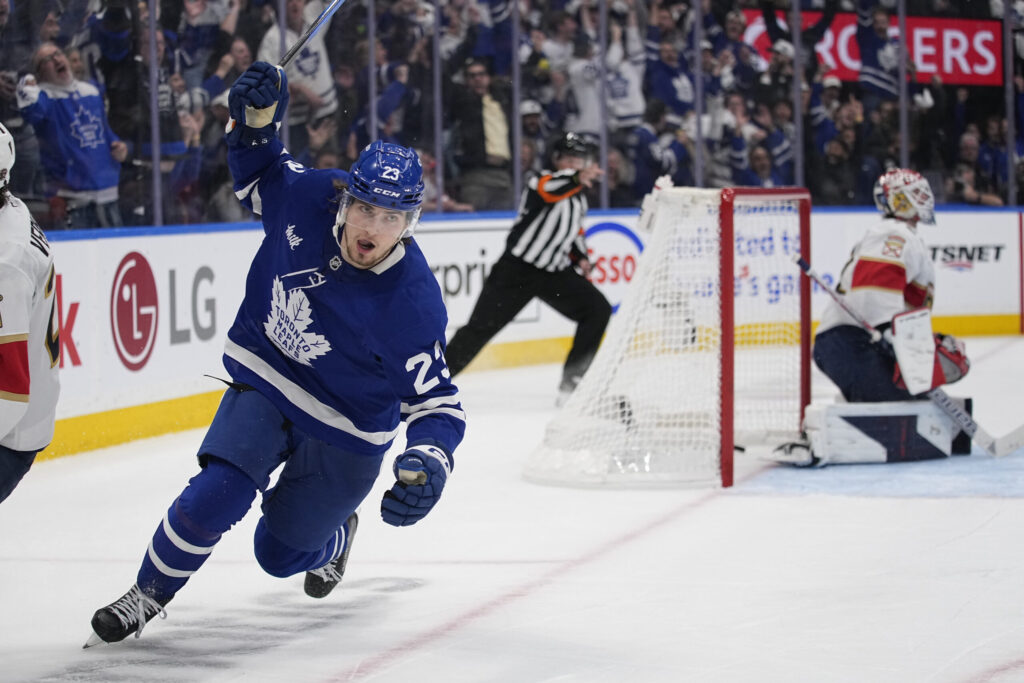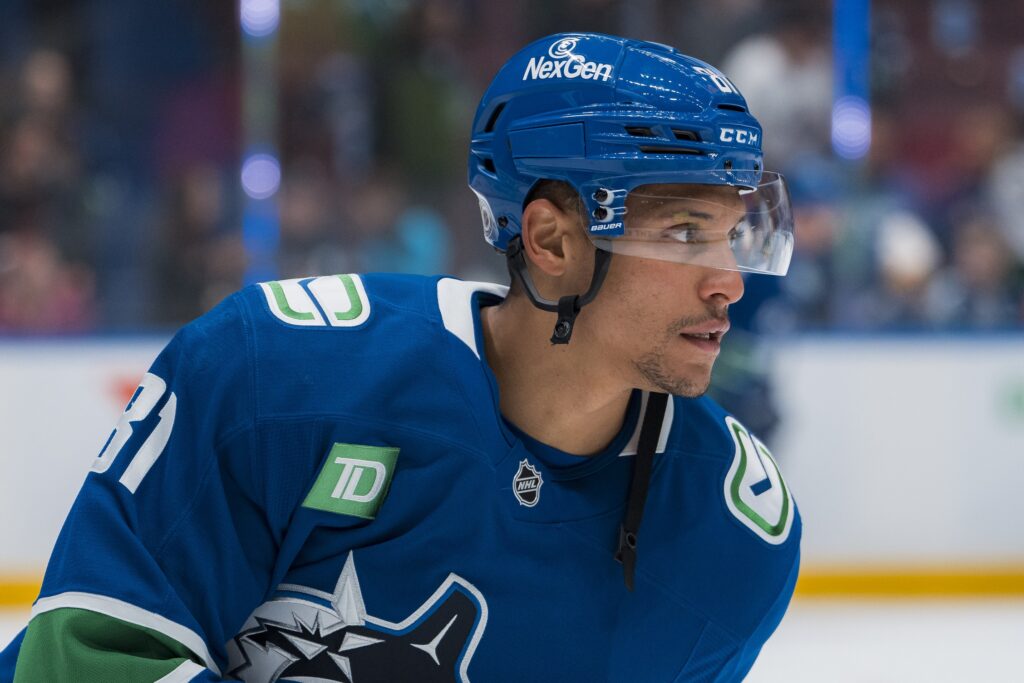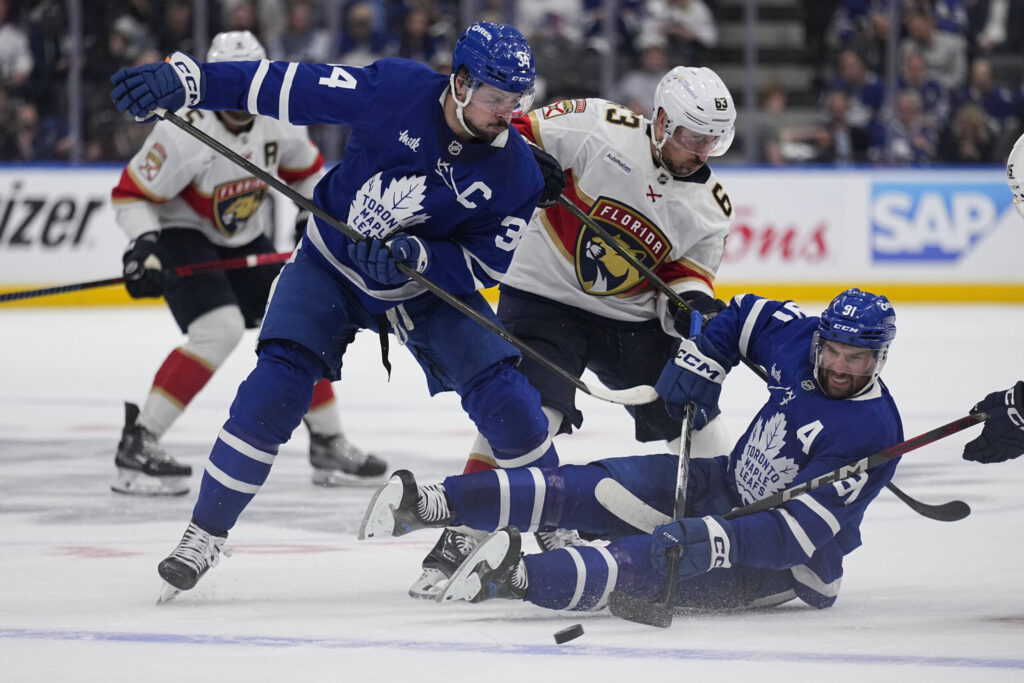The winds of change have finally swept through Scotiabank Arena, and for the first time in a long time, the Toronto Maple Leafs are entering a season with a forward group that looks decidedly different. The seismic offseason trade of Mitch Marner has signaled the end of an era, forcing General Manager Brad Treliving to pivot and build a forward corps that he hopes is better suited for the rigors of playoff hockey. For a fanbase that has become all too familiar with postseason heartbreak, this new-look lineup represents a glimmer of hope, a potential changing of the guard, and a whole lot of questions.
The Marner Domino Falls: Redefining the Core
You can’t talk about the 2025-26 Maple Leafs without first addressing the elephant that has left the room. The sign-and-trade of Mitch Marner to the Vegas Golden Knights was a franchise-altering move, the kind that will be debated in bars and on barstools across the GTA for years to come. While losing a player of Marner’s caliber is never easy, the move has freed up significant cap space and, more importantly, has allowed the Leafs to move on from a roster construction that had proven to be top-heavy and, ultimately, unsuccessful when it mattered most.
Also on the EDGE – How the Maple Leafs Are Finally Leaving the Core-4 Era Behind
With Marner gone, the pressure now shifts to the remaining members of the old guard and the new faces brought in to fill the void. John Tavares, now inked to a more team-friendly deal with a cap hit of $4,389,279, remains a vital presence in the locker room and a reliable contributor down the middle. His role will be as much about mentorship as it is about production, as he’ll be tasked with guiding the next wave of Leafs talent.
One of the key beneficiaries of the Marner trade is Matthew Knies. Signed to a multi-year deal with a cap hit of $7,750,000, Knies is poised for a breakout season. He has all the tools to be a modern-day power forward – size, skating, and a relentless motor. Expect him to see top-six minutes and be deployed in all situations. This is the year Knies needs to prove he can be a consistent offensive threat and a player the team can lean on for tough assignments.

New Faces, New Roles: Treliving’s Offseason Overhaul
Brad Treliving has been a busy man this offseason, bringing in a host of new forwards to reshape the lineup. The centerpiece of the Marner trade, Nicolas Roy, comes over from Vegas and projects to be the team’s third-line center. Roy is a versatile, right-handed forward who can play up and down the lineup and on the wing, giving head coach Craig Berube plenty of options. His $3,000,000 cap hit is a reasonable price for a player of his ilk.
From the Utah Mammoth, the Leafs acquired playmaker Matias Maccelli. A left-winger with excellent vision, Maccelli seems like a natural fit alongside John Tavares on the second line. He’s the type of player who can elevate the games of his linemates, and at a cap hit of $3,425,000, he could provide excellent value if he clicks with Tavares.
Also on the EDGE – Which Maple Leafs Will Answer the Bell in the Post-Marner Era?
Perhaps the most intriguing addition is Dakota Joshua, acquired from the Vancouver Canucks. Joshua is a big, bruising forward who is known for his punishing hits and shutdown capabilities. He’s the type of player the Leafs have been missing in their bottom-six for years, and he should provide some much-needed sandpaper to the lineup. He can also chip in with some offense, making him a valuable commodity at a cap hit of $3,250,000.

Scott Laughton, a trade deadline acquisition from last season, is back and projects to be the fourth-line center. He was a reliable safety valve in the postseason and provides a steady presence in the bottom-six. The Leafs also brought in a number of depth forwards, including Vinni Lettieri, Benoit-Olivier Groulx, Travis Boyd, and Michael Pezzetta, who will likely start the year with the Marlies but could push for NHL spots.
Projecting the Lines: Where Does Everyone Fit?
With so many new faces, the biggest question heading into training camp will be how the lines shake out. Here are a couple of potential combinations:
- Line 1: Matthew Knies – Auston Matthews – Max Domi
- Line 2: Matias Maccelli – John Tavares – William Nylander
- Line 3: Bobby McMann – Nicolas Roy – Nicholas Robertson
- Line 4: Steven Lorentz – Scott Laughton – Calle Jarnkrok
- Line 1: Matthew Knies ($7,750,000) – Auston Matthews ($13,250,000) – William Nylander ($11,500,000)
- Line 2: Matias Maccelli ($3,425,000) – John Tavares ($4,388,420) – Max Domi ($3,750,000)
- Line 3: David Kampf ($2,400,000) – Nicolas Roy ($3,000,000) – Dakota Joshua ($3,250,000)
- Line 4: Bobby McMann ($1,350,000) – Scott Laughton ($1,500,000) – Calle Jarnkrok ($2,100,000)
Both lineups have their pros and cons. The first projection from Corey Abbott reunites the electric duo of Matthews and Domi, bumping Nylander down to the second line, but this might not be ideal.
The salary-based lineup loads up the top line with the team’s three most expensive forwards, which could be a recipe for offensive dominance. The second line, however, raises some concerns. While Maccelli and Domi are both skilled playmakers, neither is known for their finishing ability. The third and fourth lines, on the other hand, look to be formidable. A shutdown line of Kampf, Roy, and Joshua could be a nightmare for opposing top lines, and a fourth line of McMann, Laughton, and Jarnkrok could be one of the best in the league.
The Next Wave of Forwards
While the focus has been on the new additions, there are a couple of young players who could make a big impact this season. The most exciting of the bunch is 2023 first-round pick Easton Cowan. After a dominant season in the OHL, Cowan is knocking on the door of the NHL. He’s a relentless worker with a high hockey IQ and a knack for showing up in big moments. With Marner gone, there’s a spot in the top-six up for grabs, and Cowan has a real shot at claiming it. Even if he starts the year with the Marlies, expect to see him in a Leafs uniform at some point this season. He’s a potential Calder Trophy candidate if he can stick in the top-nine.

The other player to watch is Nicholas Robertson. This could be a make-or-break season for the young forward. The Leafs re-signed him to a one-year, $1.825 million contract, a clear sign that they still believe in his potential. He’s a dynamic skater with a great shot, and he’s shown flashes of being a legitimate secondary scorer. If he can stay healthy and find some consistency, he could be a huge X-factor for the Leafs this season.
The Bottom Line: Are the Leafs Better Off?
So, after all the wheeling and dealing, are the Maple Leafs a better team than they were a year ago? It’s a tough question to answer. On paper, they’ve lost a superstar in Mitch Marner, but they’ve also added a lot of depth and versatility to their forward group. They’re a bigger, tougher team to play against, and they have more options up and down the lineup.
The success of this team will ultimately come down to a few key factors. Can Matthew Knies take the next step and become a legitimate top-six forward? Can the new additions like Roy, Maccelli, and Joshua make a seamless transition to a new team? And, most importantly, can Auston Matthews and William Nylander continue to produce at an elite level?
The Leafs’ forward group is still a work in progress. Treliving has indicated that he’s still in the market for another top-six forward, with names like Bryan Rust, Rickard Rakell, and even former Leaf Nazem Kadri being thrown around as potential targets. Acquiring one of those players would likely cost a top prospect like Cowan or a high draft pick, but it might be a necessary move to put this team over the top.
One thing is for sure: this will be a fascinating season for the Toronto Maple Leafs. The pressure is on, the expectations are high, and for the first time in a long time, there’s a real sense of unpredictability surrounding this team. For a fanbase that has been starved for playoff success, that might not be such a bad thing.
Created with the aid of Gemini AI
